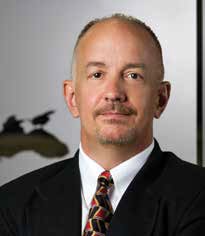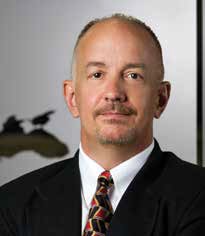Quick Bio

Name: Jim Reinhart
Title: CEO
Company: Tekvox
Overtime: Reinhart is an avid coach and mentor in a wide range of activities in his personal time: youth sports coaching, historic cemetery preservation, urban reforestation, mountain biking, and kayaking.
SCN: At what point did you realize that you were destined for a career in technology?
Jim Reinhart: I’ve been on this path since I was a marauding toddler with a screwdriver. My dad was an accomplished engineer and do-it-yourselfer, and I was his apprentice throughout my childhood. I never met an electrician, plumber, carpenter, mason, roofer, mechanic, welder, or A/C tech as a kid. We did everything ourselves, and this remains an empowering skillset to this day. Where does a kid like this go but engineering school?
SCN: You spent the early part of your career at Motorola, working with embedded processing and systems on a chip (SoC); you then held leadership positions at a few startups specializing in high performance CPUs and digital video SoCs. How did these experiences shape your perspective on where systems processing was headed?
JR: At Motorola, I earned a strong foundation in leading-edge semiconductor design and manufacturing. Since semiconductors underpin all systems products, we were in close touch with the pioneers of really cool systems: Apple, Atari, Sega, General Instrument, Sony, CISCO, EMC, ATT, Siemens...everything from consumer electronics to computers, to routers, to central office switches. Everyone was adopting microprocessors, and we had arguably the finest in the world. It was like the Wild West with few rules and no precedents to follow.
Personally, I was fascinated with the systems that were constructed around our fairly primitive processors of the time. I invested a lot of effort developing deep expertise in the application of computing and network technologies and working with our customers to optimize both hardware and software constraints at a system level. As growing transistor counts allowed expansion of on-chip capabilities, I was in an ideal position to drive integration of system-level functionality and make it useful to customers. I also knew firsthand about how customers were using our ICs and what they needed in terms of tools and support.
In the end, the biggest lesson was to understand the shape of the customer’s evolving need and to get ahead of it—but not too far ahead.
SCN: As a cofounder of Luminary Micro, in just a few years, you drove the company to an acquisition by Texas Instruments, subsequently leading it as an independent business unit within TI’s AEC division. How did these experiences guide you in 2014 to Tekvox, with its drop-in approach to deploying AV infrastructure for teaching and collaboration solutions?
JR: Luminary Micro afforded me the opportunity to bundle all of my learning about system-level solutions and customer needs for software and tools into one cohesive product line. This line, the Stellaris MCUs, pre-prepackaged everything a customer needed to begin doing their value-add on day one. System-level content on-chip, RTOS, drivers, reference designs, example market-specific applications all came right out of the box pre-configured and working. A customer could be working on their unique, proprietary solution in a very short period of time without needing to reinvent any wheels.
At TI, my tenure was focused on integrating Luminary and then spreading the know-how that we brought with us. I spent a lot of time talking about standardization, late-stage customization, and market-specific product orientation, which is opposite of the horizontal, general-purpose tradition of this market.
As my tenure obligation with TI entered its final year, a mutual friend introduced me to Tekvox’s founder Mike Slattery. I loved the Tekvox drop-in concept of a vertical, ready-to-deploy solution that didn’t involve re-inventing the wheel on a room-by-room basis and felt like I knew what it would take for Tekvox to scale its business to the next level and beyond.
Like with Stellaris, we standardize designs and preconfigure the systems delivering ready-to-use solutions that can be installed in minutes rather than hours. Through this, we can fundamentally change the economics and dramatically improve customer outcomes.
SCN: With your background more in IT, and Tekvox’s founding rooted more in AV, how is the company leveraging that joint background in a post-convergence world? What can systems integrators expect from Tekvox looking to the future?
JR: While IT has indeed been a major part of my career, I am comfortable in the AV world, having many cycles of learning in complex digital video ICs, systems, and software. In the simplest terms, I fear neither and can freely embrace needs and use-cases of both sides equally well.
In terms of expectations, systems integrators can expect Tekvox to take an increasingly holistic look at the process of deploying network-managed AV systems and consistently working to make it streamlined and predictable, so they can focus on their unique value-add instead of repetitive low-value functions. Whether you identify as AV or IT, our goal is to understand and pre-solve needs.
SCN: What do you think is the greatest challenge facing the AV/IT industry?
JR: Throughout my career change, management is always the biggest challenge of an industry. AV/IT is faced with increasing competition for talent from many directions: consumer technologies continue to encroach on the “pro” world, and the line between AV and IT will (and must) continue to blur. Incumbents tend to do what they do best and customers turn away from “the same old thing.” For the AV industry to stay healthy and grow, it must proactively challenge its historic ways of doing things and adopt appropriate new technologies.
I once heard a very senior Motorola executive say this about the transition from analog to digital cellular: “We’re Motorola; digital will happen when we get there.” Too bad Nokia didn’t pay heed. Then again, Nokia didn’t pay much heed to Apple.
Interestingly, none of the incumbents recognized their successors as credible contenders. Can you recognize change and embrace it? That is the challenge.
Lindsey M. Adler is editor of SCN.

